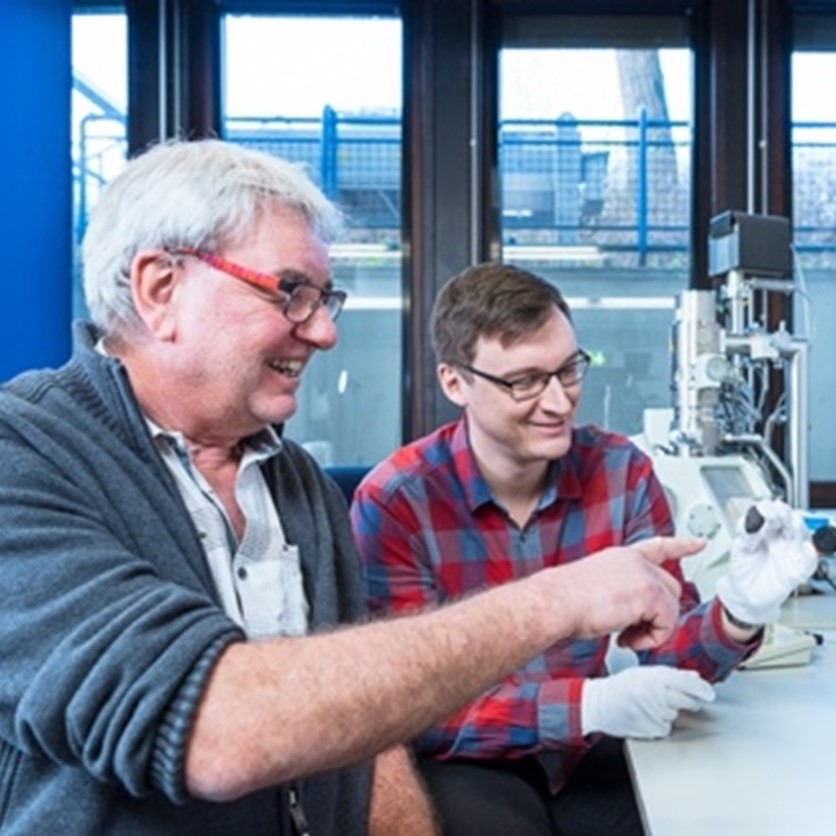"Sensation Meteorite Fall" in Flensburg

A fireball in the sky, accompanied by a bang, amazed hundreds of eyewitnesses in Northern Germany last September. The reason for the spectacle: A meteorite entered the Earth's atmosphere and partially burned up there. A day after the event, a citizen found a 24.5 grams black stone on the lawn of his garden in Flensburg.
Dieter Heinlein from the Augsburg Institute for Planetary Research of the German Aerospace Center recognized the stone as a fragment of a meteorite and gave the sample to the experts at the Institute für Planetologie at the University of Münster (WWU).
Prof. Dr. Addi Bischoff and PhD student Markus Patzek have been studying the stone mineralogically and chemically since then – in the meantime around 15 university and research institutes in Germany, France and Switzerland are now involved in the research.
The first research results show that "Flensburg", the name given to the meteorite, can be compared to very rarely fallen meteorites only, so-called carbonaceous chondrites. Scanning electron microscopic studies show that Flensburg contains only minerals that have formed with the participation of water in the early phase of our solar system. These are particularly layered silicates and carbonates. Thus, the original source rock can be seen as part of a possible building block of the Earth, which could have brought water in the early phase of the planet's development.
"The Flensburg meteorite belongs to an extremely rare meteorite class and is the only meteorite fall in Germany that proves that 4.56 billion years ago there had to be small bodies in the early solar system with liquid water on them. Perhaps such bodies also supplied water to the Earth”, says Addi Bischoff.
Original publication:
Bischoff, A., Alexander, C.M.O’D, Barrat, J.-A., Burkhardt, C., Busemann, H., Degering, D., Di Rocco, T., Fischer, M., Fockenberg, T., Foustoukos, D.I., Gattacceca, J., Godinho, J.R.A., Harries, D., Heinlein, D., Hellmann, J.L., Hertkorn, N., Holm, A., Jull, A.J.T., Kerraouch, I., King, A.J., Kleine, T., Koll, D., Lachner, J., Ludwig, T., Merchel, S., Mertens, C.A.K., Morino, P., Neumann, W., Pack, A., Patzek, M., Pavetich, S., Reitze, M.P., Rüfenacht, M., Rugel, G., Schmidt, C., Schmitt-Kopplin, P., Schönbächler, M., Trieloff, M., Wallner, A., Wimmer, K., Wölfer, E. (2020): The old, unique C1 chondrite Flensburg – insight into the first processes of aqueous alteration, brecciation, and the diversity of water-bearing parent bodies and lithologies. Geochim. Cosmochim. Acta, 293, 142–186. Link

